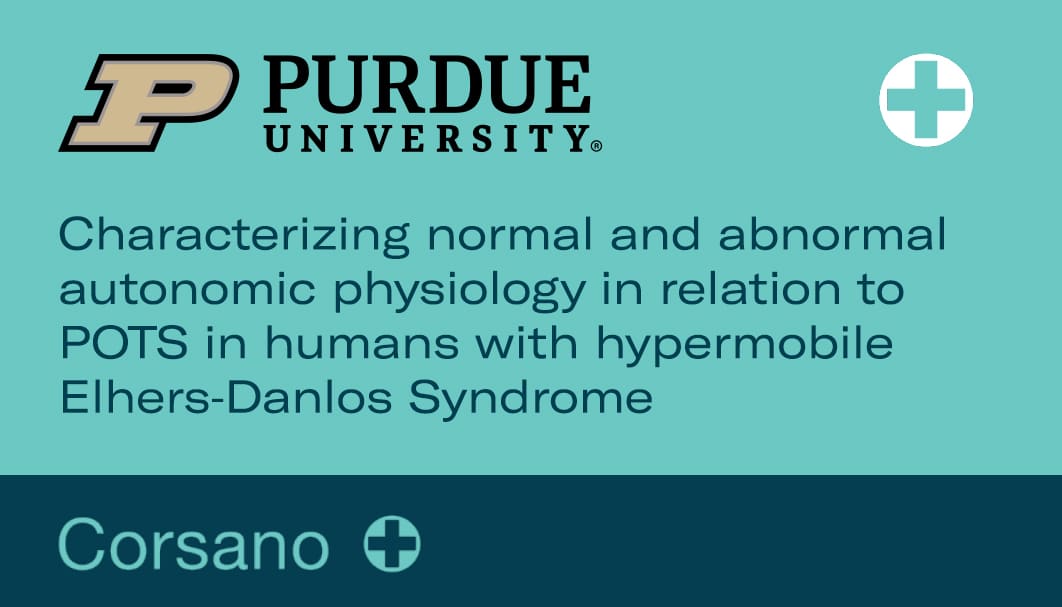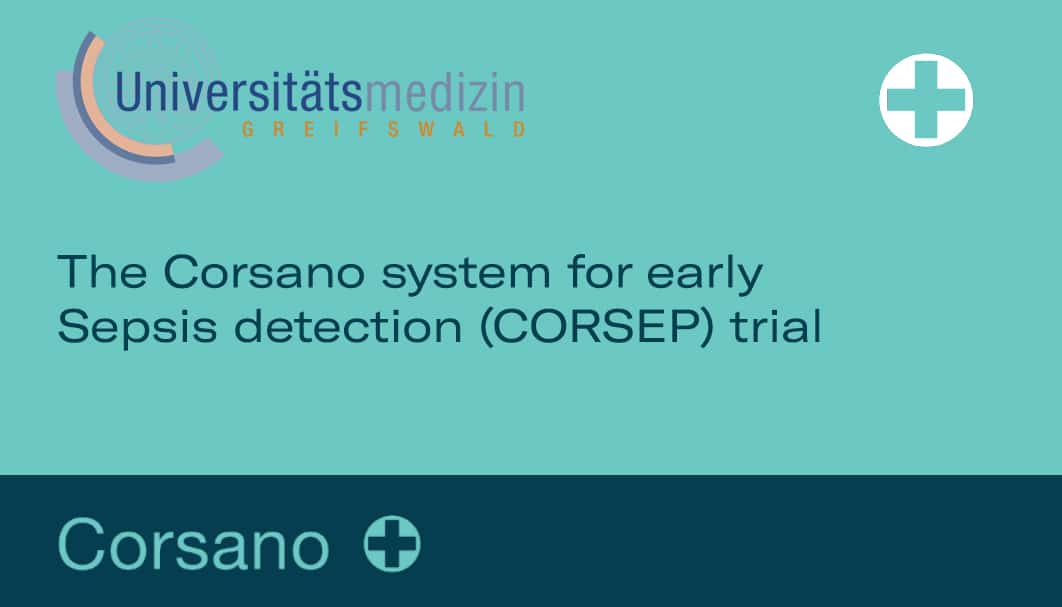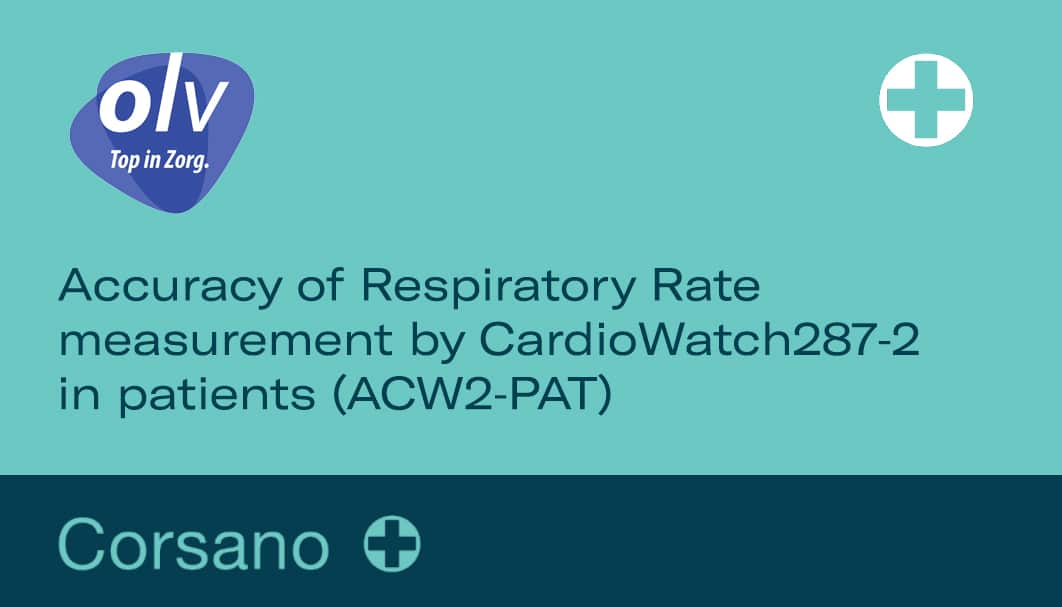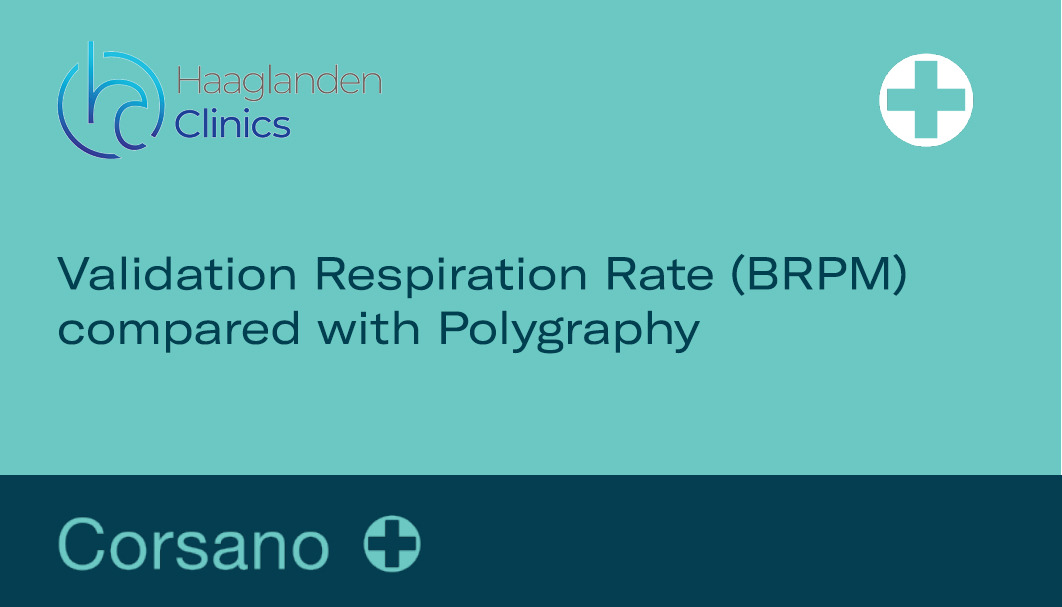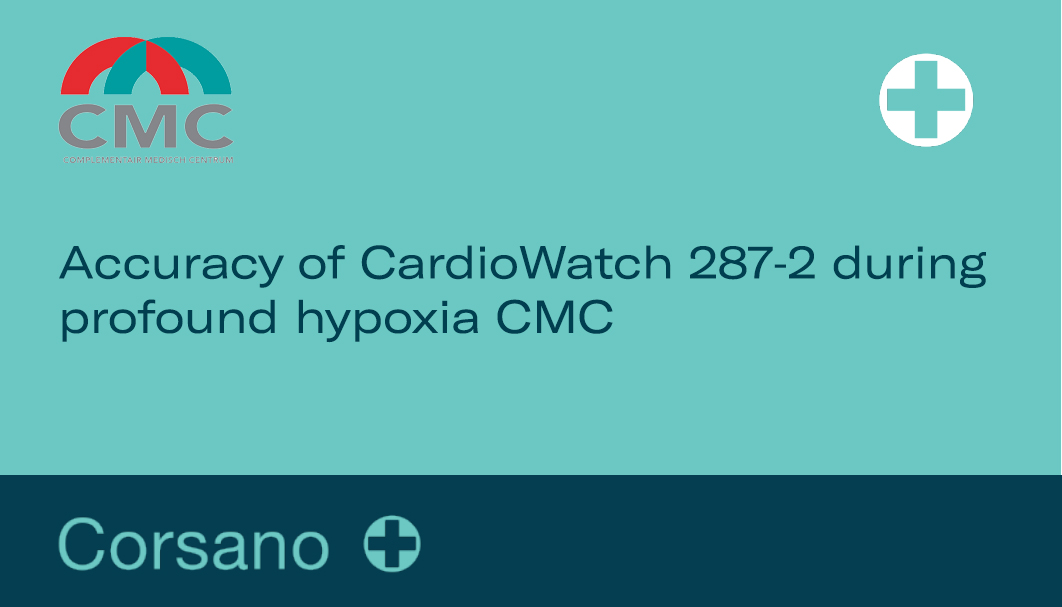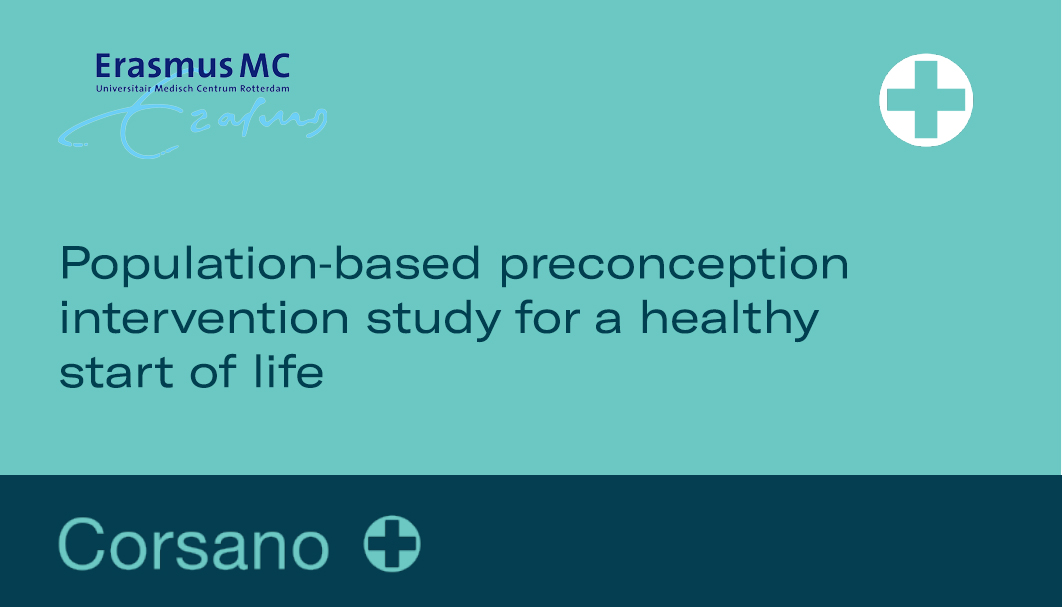Resources
Articles in support of Corsano’s scientific approach.Characterizing normal and abnormal autonomic physiology in relation to POTS in humans with hypermobile Elhe...
Investigation of Corsano CardioWatch 287-2B devices for monitoring Elhers-Danlos Syndrome (EDS) patient physiology in both stable and symptomatic states for digital biomarker and personalized predictive model development
Digital Biomarker Discovery and Management of Individual Physiological Activity and Performance Measures in...
Investigation of Corsano CardioWatch 287-2B devices for monitoring and maintaining peak cognitive performance levels in healthy adults living in isolation to improve spaceflight readiness.
Early Detection of Inflammation Induced by Lipopolysaccharide in Healthy Volunteers via Wearable Sensors
Improving health outcomes in areas such as early identification of infection, individual vaccine responses, and the monitoring of autoimmune conditions and immune-oncology therapies require medical approaches that transcend outdated, century-old practices for measuring inflammation, such as using fever as a primary indicator
Differences in Acceptability of Music Therapy Sessions Played Live Compared to a Recording Thereof
The power of music to raise the spirits and to heal the soul should not be underestimated. There is growing recognition of the significance of music as a complementary treatment in palliative care, which is reflected in the growing body of scientific literature on the subject and in the popularly of music therapy among palliative care...
The Corsano system for early Sepsis detection (CORSEP) trial.
The Corsano system for early Sepsis detection (CORSEP) trial. A collaborative trial between Universitätsmedizin Greifswald and Corsano Health B.V.
Evaluation of Core Body Temperature in an intensive care setting ICU-TEMP
Fever is one of the most common clinical symptoms. So far, clinically established methods to monitor core body temperature (CBT) are either invasive and expensive (blood, bladder or rectal catheter) and/or non-continuous (tympanic temperature measurements).
Accuracy of respiratory rate (RR) measurement by CardioWatch287-2 (CW2) during different respiratory rates ...
RR will be obtained by FDA cleared Reference Device GE Medical Monitor B125M (K213490) with E-MINIC module (K052582).
Accuracy of Respiratory Rate measurement by CardioWatch287-2 in patients (ACW2-PAT)
RR will be obtained by FDA cleared Reference Device General Electric® Carescape B850 cleared under K131414 with an oxygen mask Oxymask OM-1125-8 with an anesthesia gas sampling line of 2 m.
Photoplethysmography to detect circulatory arrest: A study in patients with induced cardiac arrests
Out-of-hospital cardiac arrest (OHCA) is a leading cause of global mortality. Delays to initiation of cardiopulmonary resuscitation (CPR) should be as short as possible to achieve the highest survival chance.
RECAMO: REmote CArdiac MOnitoring by the Corsano Cardiowatch 287-2 of BP and AF
Wearables have the potential to monitor patients remotely. The Corsano CardioWatch 287-2 is such a medical device that can monitor atrial fibrillation and long-term blood pressure.
Multi Parameter Vital Signs Monitoring by the Corsano Cardiowatch 287-2 Validation Study
MULTI-VITAL Multi Parameter Vital Signs Monitoring by the Corsano Cardiowatch 287-2 Validation Study
The potential of a wearable monitoring bracelet for COPD patients
Investigating the potential of Corsano Cardiowatch 287 monitoring bracelet in monitoring patients with Chronic Obstructive Pulmonary Disease (COPD) at high risk of exacerbations
Phenotyping and Classifying Asthma Exacerbations (ExCluSie-F)
An observational study in patients between 12 and 70 years old with an acute asthma exacerbation, to determine the relation between phenotypical characteristics and the treatment response.
Validation Respiration Rate (BRPM) compared with Polygraphy
Evaluation of the performance and efficacy of the Corsano Cardiowatch 287 Bracelet in measuring respiratory rate at rest, as compared to golden standard and predicate device.
Safety and efficacy of anti-CD19 CAR T in subjects with Lymphocytic Lymphoma
A phase I/II, multicenter study evaluating the feasibility, safety, and efficacy of point-of-care manufactured 19CP02 in subjects with relapsed/refractory B-cell non-Hodgkin lymphoma.
PPG AF-Burden Clinical Trial CCN-AMC
Evaluation of the performance of the Corsano Cardiowatch 287 Bracelet in identifying AF episodes and determining the AF burden in patients with known paroxysmal AF
Accuracy of CardioWatch 287-2 during profound hypoxia CMC
The present study is looking for calibration and accuracy of SpO2, Pulse Rate and Respiration Rate derived by a newly developed based wrist device (CardioWatch 287-2 or Test Device).
Population-based preconception intervention study for a healthy start of life
The first 1000 days of life reflect the period from the 3 months before conception until the age of 2 years. An accumulating body of evidence suggest that social-demographic background
Validation PPG measured HR and RR compared with ECG
To study the feasibility, efficacy and performance of the Corsano CardioWatch 287 module with a photoplethysmographic sensor for measuring heart rate and RR-intervals
Tele-TOKS: Implementation of an early warning system
Vital sign changes often precede cardiac arrest, unexpected death, or ICU admission. If observed and treated, it could prevent the patient’s condition from deteriorating.
Smart in OAC – AFNET 9
To demonstrate that patients with previously unknown atrial arrhythmias can be detected by a wearable in combination with Preventicus Heartbeats Core using a completely digital patient data capture system.
Atrial Fibrillation detection in OBESity using Ehealth
Obesity is a global epidemic. Obesity is associated with an increased risk of atrial fibrillation (AF). AF is the most common sustained cardiac rhythm disorder in humans with potentially life threatening complications.
SmartAF – Monitoring of Atrial Fibrillation in Hospitalized Patients for Stroke Prevention
Atrial fibrillation (AF) is the most common cardiac arrhythmia and a major risk factor for cerebrovascular insults. Screening for AF in hospitalized patients is challenging. The classical ECG monitoring requires
MINDfulness in Cardiac Obesity Rehabilitation using E-health (MINDCORE) – pilot study
The number of cardiac patients with obesity is rising, however their number of referral to cardiac rehabilitation (CR) is not. Patients with obesity report a higher level of anxiety, a greater fear of movement after a cardiac event
DivAirCity: Personal exposure to air pollution and associated vital signs
In this study, we try to investigate the impact of air quality and green-blue spaces on vital signs, stress, and mood states. Using a scripted exposure protocol subjects will perform aerobic exercises
Generation R Next: Longitudinal study that examines the growth, development, and health of children
The first 1000 days of life reflect the period from the 3 months before conception until the age of 2 years. An accumulating body of evidence suggest that social-demographic background, lifestyle and nutrition of both parents during
Determine AF Burden With PPG Trial – Detection and Quantification of Episodes of Atrial Fibrillation
In this prospective single-center trial, a wearable photoplethysmographic (PPG) sensor coupled with a cloud analytics service will be used to detect and quantify atrial fibrillation (AF) episodes in patients with known paroxysmal AF.
Corsano EndoWatch: The smart wearable that helps to improve life of patients after treatment of a suprasell...
Patients with a suprasellar (hypothalamic) brain tumour often have excellent survival, but poor outcome due to hypothalamic dysfunction (HD). The hypothalamus is an endocrine gland and the key-regulator of our body.
Realtime monitoring of activity and feedback for patients with femoral bone metastases
Bone metastases represent a common complication in cancer patients, particularly in advanced stages of the disease. The presence of bone metastases can cause skeletal-related events, such as bone pain, pathological fractures
